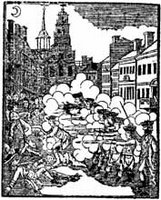American historians’ Twitter feeds lit up yesterday with links and responses to an
essay from James Wagner, the president of Emory University, extolling the value of compromise. Though the essay started talking about national politics, by the end it was clear that Wagner was also addressing the opposition to his
program to change the university.
But what really raised eyebrows was the example of compromise Wagner chose to praise:
One instance of constitutional compromise was the agreement to count three-fifths of the slave population for purposes of state representation in Congress. Southern delegates wanted to count the whole slave population, which would have given the South greater influence over national policy. Northern delegates argued that slaves should not be counted at all, because they had no vote. As the price for achieving the ultimate aim of the Constitution—“to form a more perfect union”—the two sides compromised on this immediate issue of how to count slaves in the new nation. Pragmatic half-victories kept in view the higher aspiration of drawing the country more closely together.
Some might suggest that the constitutional compromise reached for the lowest common denominator—for the barest minimum value on which both sides could agree. I rather think something different happened. Both sides found a way to temper ideology and continue working toward the highest aspiration they both shared—the aspiration to form a more perfect union.
Wagner in the past has
expressed regret about slavery on Emory’s behalf and
written of the university’s “elective amnesia.” But he seems to have had a relapse.
Wagner’s new essay expresses an old view of the Constitution, casting the lifelong servitude of generations of Americans as an acceptable price for creating or preserving the U.S. of A. The rich, white politicians who forged this compromise and benefited most from that union didn’t give up much for it. The provision’s burden fell almost entirely on poor black slaves, and to a lesser extent on relatively poor free farmers in other districts and states who lost voting power.
In fact, most of the states had already agreed to a version of the three-fifths compromise proposed by
James Madison during a debate over taxation under the
Articles of Confederation. Only two states—
New Hampshire and
New York—objected, but that was enough to kill the provision under that constitution.
James Wilson and
Charles Pinckney proposed the same ratio at the Constitutional Convention. After
debating the idea, applied to both representation and a “direct tax,” off and on for weeks, the convention adopted it in Article One, Section 2. The convention also declared that its document would be adopted even if four states voted no.
Wagner has other historical examples of compromises to point to. The Constitutional Convention also had to work out deals on a bicameral legislature with two forms of apportionment and the overlapping powers of the government’s three branches. (Of course, some might say those decisions led to periodic gridlock in Washington later.) Nineteenth-century politicians hailed legislative compromises like the Missouri Compromise and the Kansas-Nebraska Act—but they, like the three-fifths clause, had the effect of strengthening slavery.
If I had to choose one example of political compromise from early America that eventually brought wide benefits, it would be the agreement during the states’ ratification conventions to make immediate amendments to the Constitution. The result, today called the
Bill of Rights, was mostly a statement of individual rights and protections. But that compromise arose out of a much wider public debate than the elite convention. And Americans didn’t fully enjoy those rights until the Fourteenth Amendment and twentieth-century judicial decisions requiring state and local governments to respect them.
In contrast, the three-fifths clause is now inoperative and repudiated by all. Indeed, it’s so far back in our past that most people don’t understand how it operated. The Constitution didn’t define
blacks as three-fifths human, as some now interpret that clause. For purposes of calculating representation in Congress, the Constitution counted enslaved people in a district and multiplied by three-fifths before adding that number to the free people (white and black). But for all other purposes, the Constitution defined slaves as
no-fifths of humans—they were property without rights.
Enslaved Americans might have been better off
not being counted for representation. As it was, their numbers, multiplied by three-fifths, provided more influence for the rich white men in the parts of the country where they were enslaved. Those elite voters wielded disproportionate power in the U.S. Congress, the Electoral College, and state legislatures that followed the same system. Their representatives used that power to maintain their status and their human property for decades.
That’s the real lesson of the three-fifths compromise: decision-making by the elite alone tends to maintain the advantages of that elite at a cost to others. Real compromises require the participation of all the people involved and real sacrifices, even from the top.


.jpg)



.jpg)





